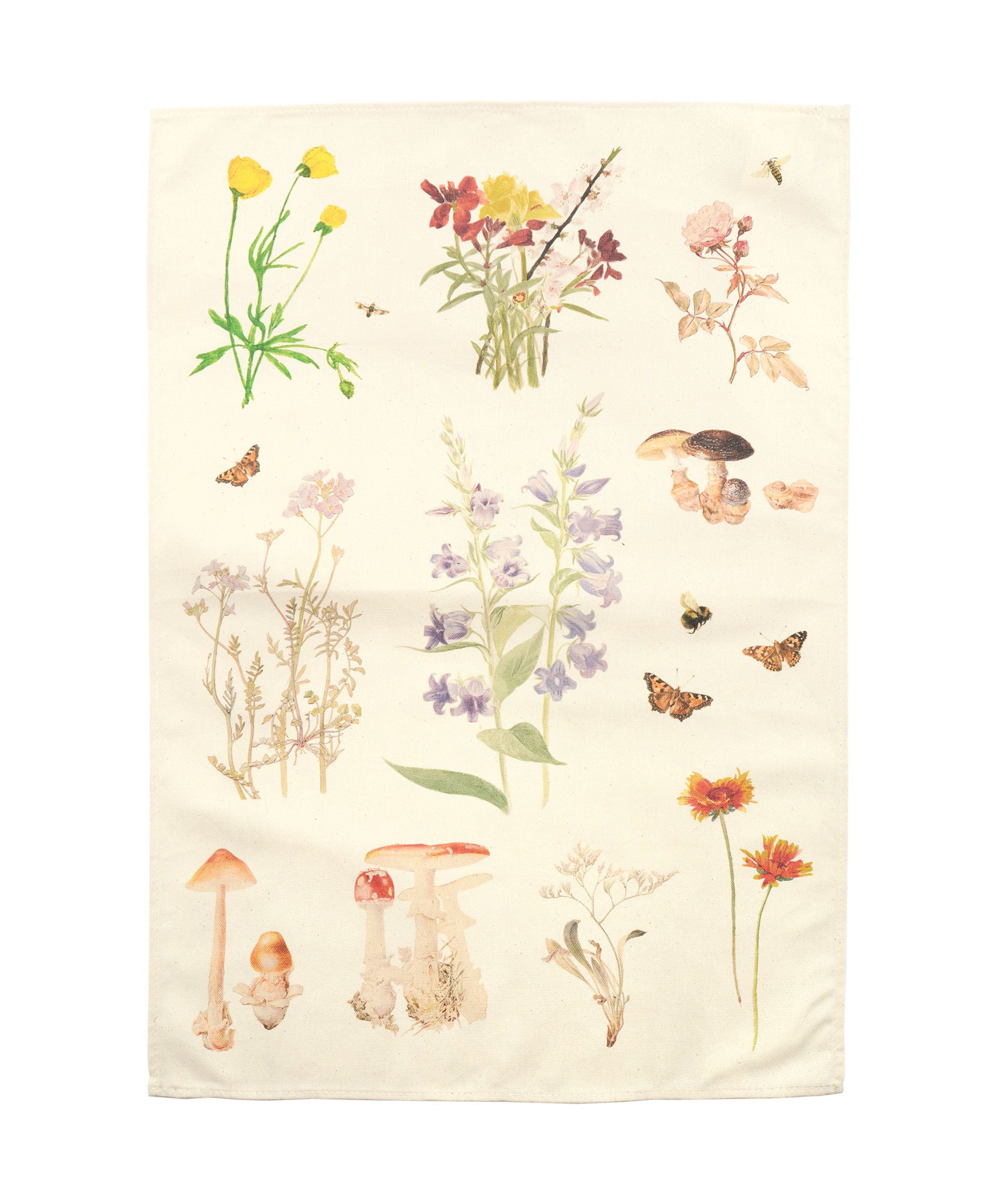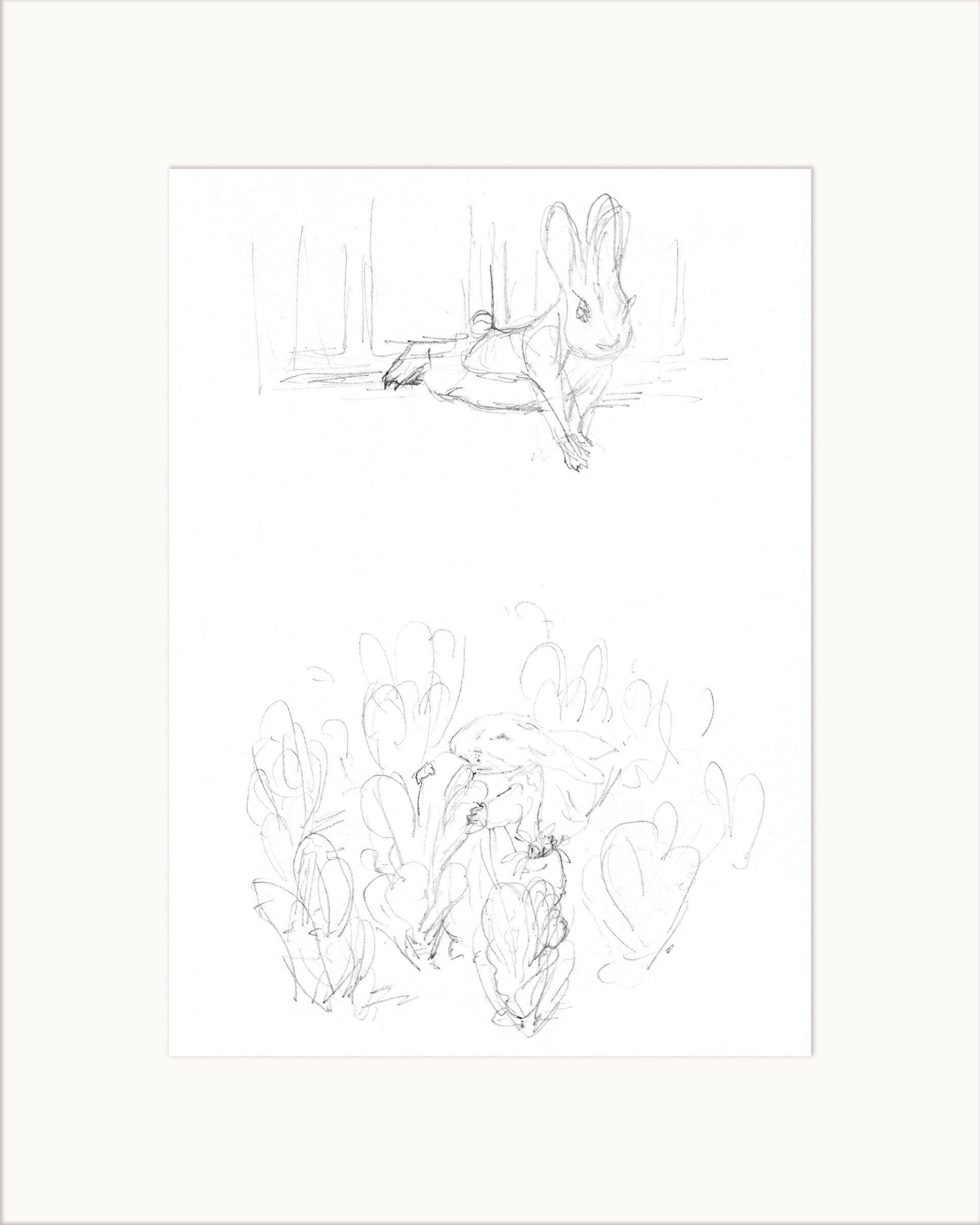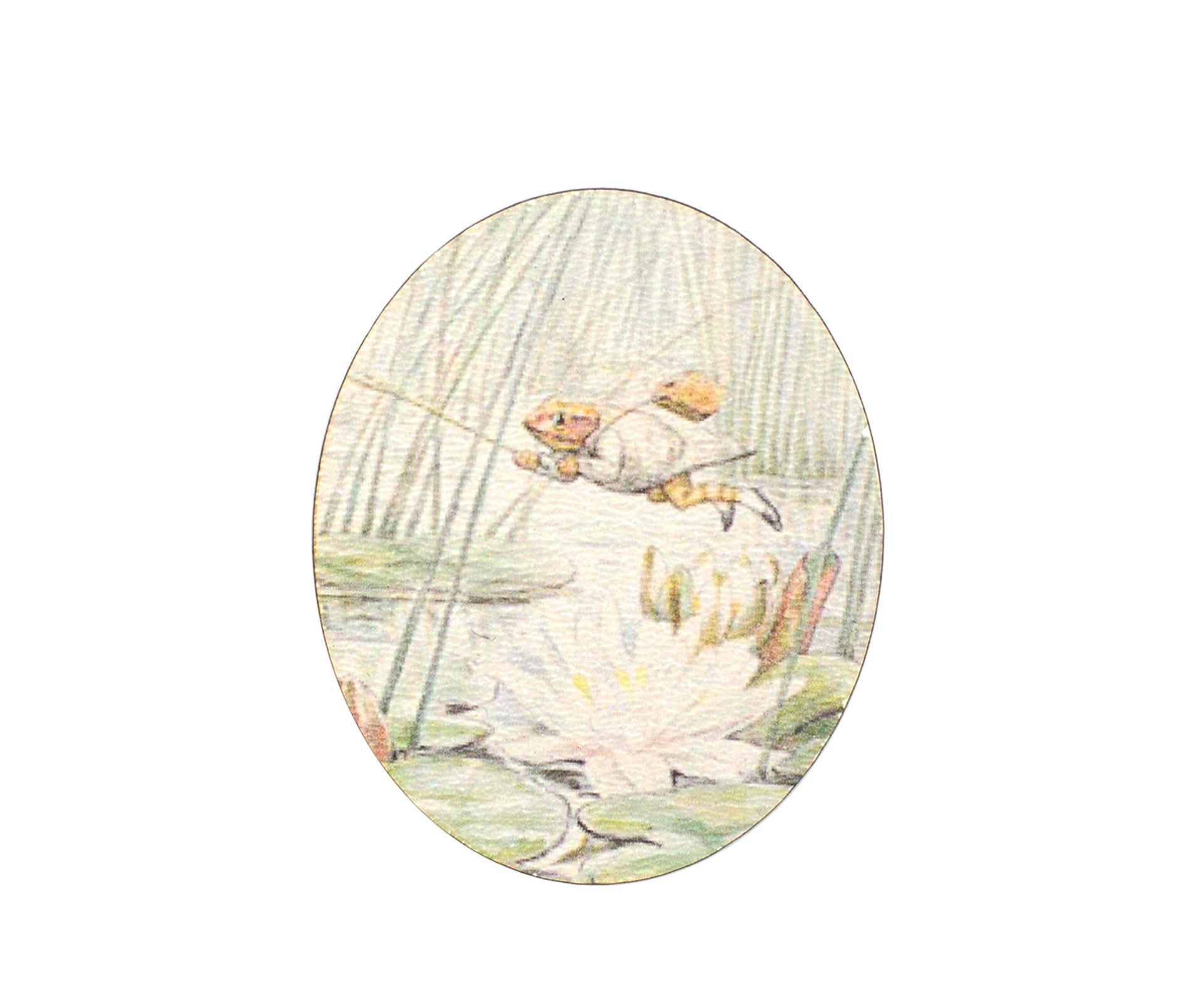
“Even the youngest can change the world.” That's what Beatrix Potter says by the mouth of one of the most famous rabbits in children's literature: Peter Rabbit. Famous for her enduring tales of animal characters, to whom she not only gave voice, but also painted in unforgettable watercolors. A fervent conservationist, scientist and farmer. Beatrix is the protagonist of Beatrix Potter: Drawn to Nature, which can be visited all year round at the Victoria & Albert Museum (V&A) in London.
Helen Beatrix, the eldest of Rupert and Helen (Leech) Potter's two children, was born on 28 July 1866 in Bolton Gardens, South Kensington, London. His childhood was influenced by long family vacations in the countryside. She was homeschooled. Her talent for drawing and painting was fostered since she was a child. She drew her own versions of Cinderella, Sleeping Beauty, and Alice in Wonderland. Since childhood she wrote imaginatively about her pets.
In 1882, the Potters began to take their holidays in the Lake District in the North East of England. Country life deeply attracted Potter, and years later he settled there and produced some of his best works.
For a long time she kept a diary under a code of writing that she invented herself. His first illustrations were sold as greeting cards in the 1890s. Potter not only produced beautiful watercolors, but she also became a skilled scientific illustrator. In 1896, he had developed his own theory of how fungal spores reproduced and wrote a professional article that should have been publicly presented by a male colleague, because women could not do it at that time.
In 1901 his first book came out for self-publishing, because it had been systematically rejected by publishers. The story of Peter Rabbit was republished a year later by Frederick Warne after Beatrix agreed to remake his black and white illustrations in color. No one could stop the escalation of success that included dolls, board games, printed papers, in today's marketing mode.
After some amorous missteps, Beatrix focused on rural life, while continuing to publish books. In 1913, at the age of 47, he married and moved to Castle Cottage in Castle Farm, where he became deeply involved with the community. Potter died on December 22, 1943. He bequeathed fifteen farms and more than 1,600 hectares to the National Trust, an entity dedicated to preserving historical sites.
The exhibition organized by the audacious V&A will trace Beatrix's journey from her early years in Kensington, to her travels to Scotland and the Lake District. There are playful staging to keep the little ones entertained, while watercolors, drawings and original manuscripts are discovered. Also included are Potter's personal items: letters, furniture and photographs.

“This exhibition will be the first to tell the full life story of Beatrix Potter,” says Annemarie Bilclough, the museum's curator, as well as the one who knows most about Potter and who is an expert on Winnie The Pooh. We wanted to do something that had never been done before: to expose Beatrix's achievements as an illustrator within a broader context of her work, with equal emphasis on other important achievements and legacies, such as her work in natural history and mycology and her legacy in landscape conservation in the Lake District. Fifty years have passed since the V&A hosted a large Potter exhibition, since the collection arrived at the museum.
— How did your interest in Potter come about?
“I have been working with the illustrations collections since I started at the V&A, more than twenty years ago, as part of a broader task in curating prints. I was invited to delve into the Winnie-the-Pooh exhibition and, following the success of that exhibition, the opportunity arose, some four years ago, to take over the management of the museum's important Beatrix Potter collection. This is the largest gathering in the world of his drawings, manuscripts, correspondence, photographs and related materials.
— How was this exhibition prepared?
—At the end of 2018, I started thinking about the topics for presentation at a meeting with the National Trust in March 2019. The preparation began in earnest at the time, and involved everything from book-based research; the main task was to read as much of her own writing as possible, including the large number of letters she wrote and her diary, as well as visiting all the archives and sites of interest relevant to Beatrix Potter. The next step was to review the entire V&A collection (made up of more than 3,000 objects), putting together a list of more than 500 objects. Having previously visited many of Potter's major collections in the UK and US, I also gathered a list of lending intentions, including items from the National Trust collection. In the meantime, the narrative was discussed and refined with our Interpretation team to ensure that it was accurate and relevant to our themes and this helped us select the list of objects. I started working closely with the National Trust Curator at the end of 2020 to reduce the list of objects to the ideal number of around 220 and for about a year we have been working with the design and interpretation teams, writing labels and interactive texts, through at least six stages of editing, revising and finalizing the interactive.

— How were the pieces to be exhibited selected?
—After making an initial cut of around 400 objects in total, we created a visual humor board of the narrative: it really helps to select the best pieces for the story we're telling when we can see groups of objects visually rather than working from lists. We wanted to choose the best objects to highlight Beatrix's voice and personality, so many objects were chosen because they relate to things she wrote about in her diary.
— How much material has been left out?
— There are so many amazing objects in the V&A collection and the National Trust archive that we would have liked to present! However, as in any exhibition, space is limited and we had to be selective. The V&A and National Trust deal with a wide variety of Beatrix observation drawings, including plants and animals, and insects seen under a microscope. We incorporated some of them into the “Under the Microscope” section, including a study of a beetle through a microscope, but we would love to have included even more of these if space was available.

“Of what will not be exhibited, what has saddened you not to have exhibited it?
—One of the highlights of the exhibition is the Beatrix Potter Collectors Cabinet, on loan from the Beatrix Potter Society, which includes specimens of shells, butterflies, beetles and rocks. Initially, we expected to display the cabinet complete with specimens, but the contents of some drawers are so fragile, with specimens stuck inside the drawers, we made the decision to transport only one of the drawers inside the cabinet, which contains rocks and fossils. I'm sorry it can't look complete.
“Please give me three or four things that it would be appropriate to give to children before they visit the exhibition in order to put them on topic.
—The famous Beatrix Potter characters such as Peter Rabbit, Benjamin Bunny, Mrs.Tiggy-Winkle and Jemima Puddle-duck were inspired by their own pets. He had many unusual pets in his life, such as newts, frogs, bats and even a family of snails. She loved the colors and shapes of mushrooms and became very knowledgeable about them. He made many beautiful and accurate drawings of them and even experimented trying to make them grow. He invented and made his own prototypes of Peter Rabbit and Jemima Puddle-duck plush toys for his publishers to sell the dolls. We are used to such toys today, but this was something very unusual at that time. He immersed himself in the work of the fields and always wore a set of clogs and dresses made from the wool of his sheep. She became an award-winning sheep farmer in the Lake District and bought a lot of land to help protect it. It is partly thanks to her that the Lake District is a UNESCO World Heritage Site.

What place do you consider Potter to occupy in today's children's literature?
—She is one of the most beloved children's fiction authors of the 20th century and remains a staple of childhood in the UK. To date, Beatrix Potter has been translated into more than forty languages and, according to publisher Frederick Warne, Potter's books have sold more than 250 million copies worldwide.
“I know you want this show to be inspiring. What do you think Potter has to inspire the creators of children's books?
—The exhibition has more than 112 illustrations and sketches ranging from watercolors of complete characters for their storybooks, to observational sketches, drawn from the natural world. I like that visitors are inspired by Potter's attention to detail, the combination of crisp outlines that draw attention to character and fragments with a sophisticated use of watercolors and the fact that she doesn't write or draw leveling down for children, quite the opposite. We also show Potter's book work along with other achievements, in particular his ability to observe natural history, and we show that this ability for detail underpinned his work of illustration.

—The naivety of your lines is opposed to the type of books that children consume today, what is your opinion about it?
—In fact, many of Potter's illustrations are quite complex, made up of short strokes of watercolor over washes that create color patterns and a moderate use of the outline, which is used to draw attention to certain details. Potter's illustrations feature well-outlined animal characters observed in realistic contexts. -
—He's worked with Winnie The Pooh before. There is some similarity in the stories, the graphic style, the interaction of the characters... What do you find attractive in this type of project?
—This exhibition, like the one in Winnie-the-Pooh, brings together the family audience, because the artist has attracted children over generations. Creating a program that caters to a mix of audiences is a challenge. In addition, in a family program it is particularly important that design, interactive elements and objects work together to convey the narrative to audiences. Working with these elements is one of the most enjoyable aspects of setting up a large exhibition.
— What will the public find in the official book of the exhibition, of which she is co-author?
—The work follows the same narrative as the exhibition. There are four long essays corresponding to the four themes of the exhibition that reflect how Potter's love for nature underpinned all his achievements. After each of these essays there is a shorter focus piece: about the Victorian holiday, Beatrix Potter as a mycologist, as a businesswoman and as a sheep farmer, respectively.

— What three pieces should I not stop looking at in detail and why?
“So hard to choose just three! The first would be Esthwaite's water landscape sketch is one of my favorite pieces. As a sketch, he has more vivid brushstrokes in complete contrast to the miniaturist style of some of his early drawings. This is the drawing that I think most reflects how Potter described in his diary and saw the lakes in colors. You can get lost in the reflection of the island and the hills in the water. It manages to convey a sense of detail without really representing it. The second is Potter's oldest surviving sketchbook. It dates back to the age of 8. One page shows drawings of caterpillars between the leaves and on the back he made notes about their habitats and food. In addition to the caterpillar drawing being a particularly well-designed page, the combination of this with the notes provides a wonderful snapshot of a girl giving a lesson in natural history. She didn't quite finish her notes, so a sentence ends halfway through, which makes me think maybe she was called for dinner and forgot to end her work. Finally, we present a painting of fossils with notes of where they were found. It is an example of his precise miniaturist style of watercolor painting and is extremely accurate and probably to scale.
The routes that the exhibition imposes comprise four conceptual knots that are replicated in the work also curated by Bilclough. “Town and Country” explores her family background and home life: in London, her unloved home, which, however, gave her opportunities to develop her aesthetic and scientific interests, and on her family's usual vacation itinerary in the countryside. “Under the Microscope” takes visitors to the world of their pets, the collection and study of Beatrix's nature, before moving on to her growing interest in natural history and observational drawing, including the use of microscopes and culminating in her mushroom drawings and experiments in mycology. Around the same time, Potter entertained family and friends with art and illustrated letters with his pets and some of the letters would become his storybooks. “A natural storyteller” takes visitors to familiar grounds and focuses on the inspirations behind the characters and settings in her storybook. Finally, “Living Nature” discusses the important legacy she left behind in England's Lake District, starting with the purchase of the Hill Top farm, after which she began to adapt to life as a farmer within her community, where she became passionate about maintaining traditional sheep farming as a way to preserve the landscape. It also began buying land to help protect the area from development and left thousands of acres and more than a dozen farms in operation to the National Trust.
KEEP READING
Últimas Noticias
Debanhi Escobar: they secured the motel where she was found lifeless in a cistern

The oldest person in the world died at the age of 119

Macabre find in CDMX: they left a body bagged and tied in a taxi
The eagles of America will face Manchester City in a duel of legends. Here are the details

Why is it good to bring dogs out to know the world when they are puppies




